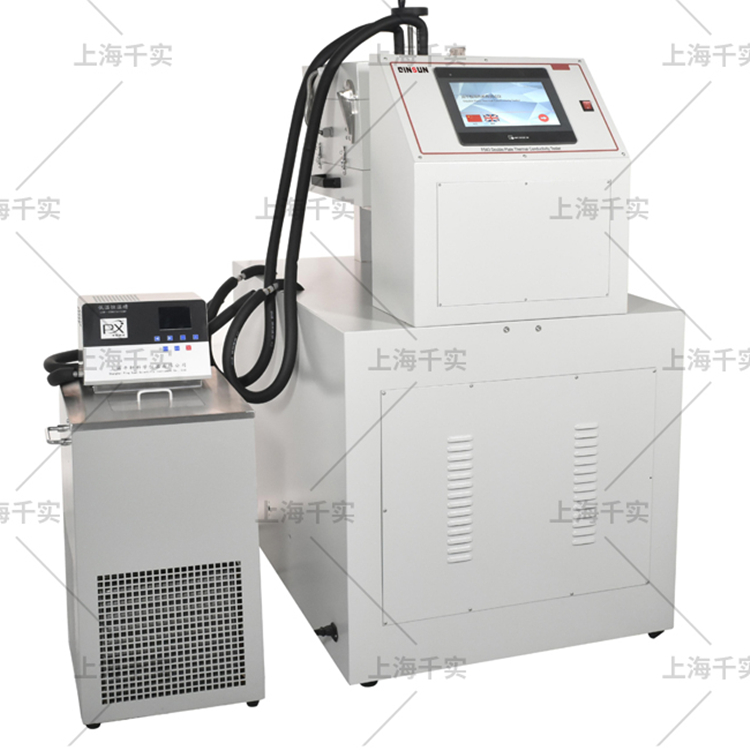Products
News
Contact
- Qinsun Instruments Co., Ltd.
- Tell:+86-21-6780 0179
- Phone:+86-17740808215
- Address:No. 2578 Minhang District Gu Dai Road, Shanghai
- Contact:Mr. Li
- QQ:846490659
Operation steps of dual-plate thermal conductivity tester

Test principle:
Based on the principle of unidirectional stable heat conduction, when the upper and lower sides of the sample are at different stable temperatures, the heat flow through the effective heat transfer area of the sample and the temperature difference and thickness between the two surfaces of the sample are measured to calculate the thermal conductivity.
Applicable standards:
GB/T 10294-2008 "Determination of steady-state thermal resistance and related characteristics of thermal insulation materials";
GB/T 3399-1982 "Test Method for Thermal Conductivity of Plastics-Heat Plate Method";
The measurement of thermal conductivity of polyurethane rigid foam materials specified in GB/T 10801.1-2002 "Polystyrene foam for heat insulation";
The measurement of thermal conductivity of extruded polystyrene foam specified in GB/T 10801.2-2002 "Extruded polystyrene foam (XPS) for thermal insulation";
GB/T 3139-2005 "Test Method for Thermal Conductivity of Fiber Reinforced Plastics";
GB/T 17794-2008 "Flexible foam rubber and plastic thermal insulation products".
The main parameters:
1. Thermal conductivity measurement range: 0.001-3.000W/m.K; thermal conductivity measurement accuracy: ±2%, repeatability: ±1%;
2. Measuring range of hot surface temperature: room temperature -150℃, temperature resolution: 0.01℃;
3. Cold noodle temperature measurement range: 0-60℃, temperature resolution: 0.01℃ (basic configuration) (can be selected according to user requirements: -10~60℃, -30~60℃);
4. Heating power of metering board: 100W+1%;
5. Full computer automatic detection and data processing system, which can be matched with general-purpose computers;
6. Power supply: 220V, 50HZ, 500W;
Steps:
Inspection work before test:
1: Check whether the total power supply voltage is within the normal range, AC220V ±10%, and whether the internal power supply air switches are all closed.
2: After installing the test piece, manually adjust the clamping force and the force display to be adjusted to the value required by the standard.
3: Check the water level of the water tank. The lowest water level must be above the copper pipe in the water tank. The high water level does not exceed the water inlet as the upper and lower limits of the normal water level. Distilled water or purified water is recommended instead of tap water.
4: Check whether the holy grails inside the cabinet can operate normally, whether there is water leakage or air leakage, if any, then run after processing.
External device startup operation steps:
1: Power on the system: turn on the main power supply of the incoming line, close the main power air switch, and power indicator light: turn on the key switch on the operation panel of the flat thermal conductivity meter to power on the system.
2: Install the test piece: Put the pre-processed test piece into the test positions on the left and right sides according to the different processing methods of different materials, and manually adjust the clamping force according to the installed test piece to the required force display, ( The value required by the standard). Clamp the test piece. Measure and record the thickness after clamping with a vernier caliper.
More information, please visit us at: https://www.qinsun-lab.com/index.html
Or send email to us [email protected]
More information, please visit us at: https://www.qinsun-lab.com/index.html
Or send email to us [email protected]





